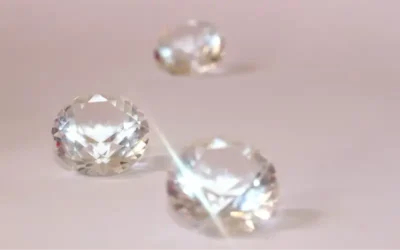Introduction
Diamonds have long been symbols of luxury, beauty, and enduring love. In recent years, lab-grown diamonds have emerged as a sustainable and ethical alternative to mined diamonds, captivating the interest of both consumers and industry experts. Among these, the quest for the largest lab-grown diamond has become a fascinating topic, showcasing advancements in technology and the evolving landscape of the jewelry industry.
Understanding Lab-Grown Diamonds
Definition and Creation Process
Lab-grown diamonds, also known as synthetic or cultured diamonds, are real diamonds produced in controlled laboratory environments. They share the same chemical composition and physical properties as natural diamonds but are created using advanced technological processes. The two primary methods for growing diamonds are:
- High-Pressure High-Temperature (HPHT) Method: This technique simulates the natural conditions under which diamonds form in the Earth’s mantle. Carbon is subjected to high pressure and temperature, resulting in the crystallization of diamond structures.
- Chemical Vapor Deposition (CVD) Method: In this process, a carbon-rich gas, such as methane, is introduced into a chamber. Under specific conditions, carbon atoms deposit onto a substrate, layer by layer, forming a diamond crystal.
Advantages Over Natural Diamonds
Lab-grown diamonds offer several benefits that have contributed to their increasing popularity:
- Ethical Considerations: They are conflict-free, eliminating concerns associated with “blood diamonds” mined in war zones.
- Environmental Benefits: The production of lab-grown diamonds typically has a smaller environmental footprint compared to traditional mining, preserving ecosystems and reducing land disruption.
- Cost-Effectiveness: Generally, lab-grown diamonds are more affordable than their natural counterparts, providing consumers with high-quality options at accessible price points.
Evolution of Lab-Grown Diamond Sizes
Early History and Breakthroughs
The journey to create larger lab-grown diamonds has been marked by significant milestones:
- 1954: General Electric (GE) created the first synthetic diamonds using the HPHT method, but they were small and used primarily for industrial applications.
- 1970s: The first gem-quality synthetic diamonds were produced, although they were still relatively small in size.
- 1980s-1990s: Russian scientists began refining the HPHT process to produce larger diamonds with better clarity and color, making them suitable for jewelry.
- 2000s: Companies like Apollo Diamond and Gemesis (later rebranded as Diamond Foundry) started using the CVD method to grow diamonds for commercial use.
Modern Advances in Lab-Grown Diamond Size
In the past two decades, rapid advancements in diamond-growing technologies have led to record-breaking sizes:
- 2013: A 1.29-carat emerald-cut lab-grown diamond was successfully created, marking a breakthrough in gem-quality synthetic diamonds.
- 2015: Diamond Foundry, backed by investors like Leonardo DiCaprio, introduced several 3-carat diamonds, demonstrating that lab-grown diamonds could rival natural ones.
- 2018: ALTR Created Diamonds introduced a 4-carat lab-grown pink diamond, the largest of its kind at the time.
- 2023: The largest known lab-grown diamond, a 34.59-carat emerald-cut diamond, was produced using the CVD method.
The Record-Breaking Lab-Grown Diamond
Specifications of the Largest Lab-Grown Diamond
As of 2023, the largest lab-grown diamond ever recorded is a 34.59-carat emerald-cut diamond, graded as G color and VS2 clarity by the Gemological Institute of America (GIA).
The Creator: Ethereal Green Diamond
This extraordinary diamond was produced by Ethereal Green Diamond, a Mumbai-based company that specializes in creating high-quality, sustainable diamonds using the CVD method.
Technological Advancements in CVD
The ability to grow such large diamonds is attributed to significant advancements in the CVD method:
- Enhanced Growth Techniques: Improvements in controlling temperature, pressure, and gas composition have allowed for the growth of larger, high-quality diamond crystals.
- Extended Growth Periods: Refinements in the CVD process have enabled longer growth cycles, resulting in larger diamond formations without compromising structural integrity.
Market Impact of Large Lab-Grown Diamonds
Disrupting the Traditional Diamond Market
The emergence of large lab-grown diamonds has significantly impacted the diamond industry:
- Pricing Pressure: Lab-grown diamonds are typically 60-80% cheaper than natural diamonds, forcing traditional diamond companies to adjust their pricing strategies.
- Shifts in Consumer Behavior: Younger generations, particularly Millennials and Gen Z, are more inclined to choose lab-grown diamonds due to their affordability and ethical advantages.
- Natural Diamond Industry Response: Companies like De Beers have acknowledged the growing market for lab-grown diamonds and even launched their own synthetic diamond brand, Lightbox Jewelry.
Changing Consumer Preferences
Trends indicate a shift in consumer preferences:
- Engagement Rings: More couples are choosing lab-grown diamonds for their engagement rings, appreciating the combination of size, quality, and ethical sourcing.
- Luxury Jewelry: High-end brands, including Pandora and Swarovski, have introduced lab-grown diamond collections to cater to this evolving demand.
Future of Lab-Grown Diamonds in the Market
The future of lab-grown diamonds looks promising, with several key trends shaping the industry:
- Continued Size Increases: With advancements in technology, even larger lab-grown diamonds are expected to emerge in the coming years.
- Mainstream Acceptance: As awareness grows, lab-grown diamonds will likely become a standard choice alongside natural diamonds.
- Sustainability as a Selling Point: Companies are increasingly marketing lab-grown diamonds as an environmentally friendly alternative to traditional mining.
Expert Opinions on Lab-Grown Diamonds
Gemological Perspective
Experts in gemology acknowledge the significance of large lab-grown diamonds:
- Quality Assessment: Lab-grown diamonds undergo the same grading processes as natural diamonds, with organizations like the GIA providing certifications that attest to their quality.
- Technological Feats: The creation of large diamonds showcases the advancements in synthetic diamond production, reflecting the industry’s capability to meet consumer demands for size and quality.
Industry Analysts’ Predictions
- Market Growth: The lab-grown diamond market is expected to grow at a CAGR of 9-12% over the next decade, driven by increasing consumer demand and technological advancements.
- Competition with Natural Diamonds: While natural diamonds still hold significant prestige, the growing acceptance of lab-grown diamonds is expected to reshape the industry dynamics.
Conclusion
The race to create the biggest lab-grown diamond is a testament to how far the diamond industry has come in terms of technology and consumer acceptance. The record-breaking 34.59-carat diamond showcases the impressive capabilities of lab-grown diamond producers and signals a shift toward a more sustainable and accessible market.
As the industry continues to evolve, one thing is certain: lab-grown diamonds are here to stay, and they’re only getting bigger and better. Whether you’re an enthusiast, a jeweler, or a potential buyer, the world of lab-grown diamonds is an exciting space to watch.






